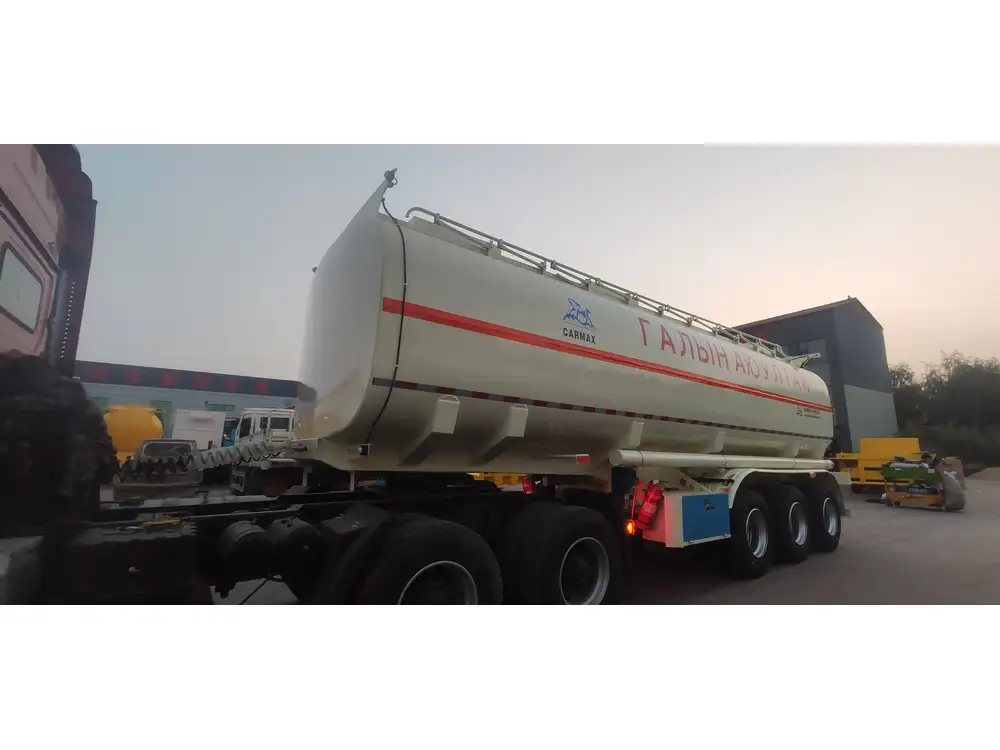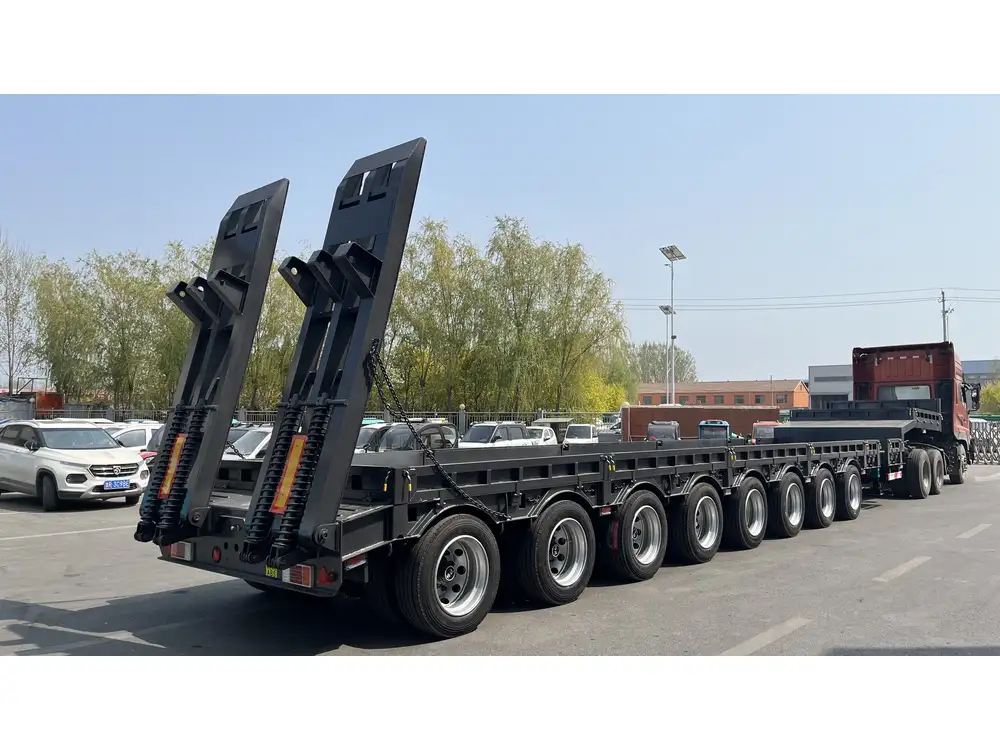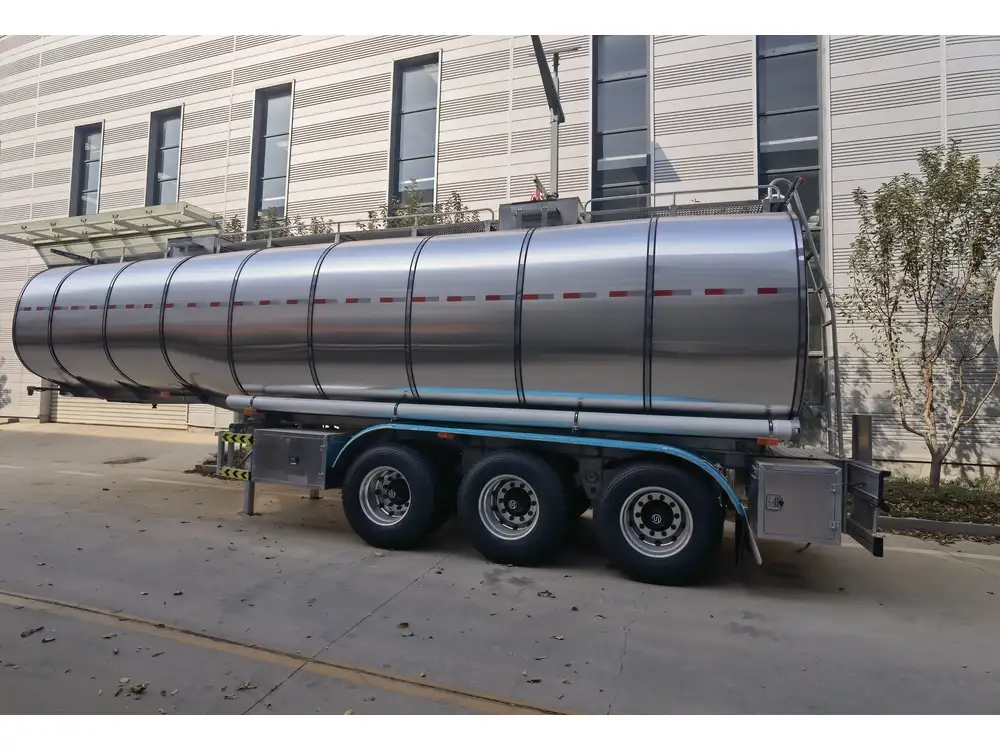In the realm of transportation, especially in the freight and logistics industry, understanding the weight of semi trucks and trailers is crucial. This understanding affects vehicle performance, load capacity, compliance with regulations, and overall operational efficiency. By delving into the nuances of how weight is determined and its implications, we can equip fleet operators and drivers with essential knowledge.
1. The Basics of Semi Truck and Trailer Weights
1.1 Definition of Key Terms
- Gross Vehicle Weight Rating (GVWR): This signifies the maximum total weight a vehicle is rated to safely transport, including its own weight and load capacity.
- Curb Weight: The total weight of the truck or trailer without any cargo but including all standard equipment, fluids, and a full tank of gas.
- Payload Capacity: This represents the maximum weight the truck can carry in addition to its curb weight, calculated by subtracting its curb weight from the GVWR.

1.2 Average Weights
| Vehicle Type | Average Weight (lbs) |
|---|---|
| Semi-truck | 20,000 – 30,000 |
| Trailer (empty) | 10,000 – 15,000 |
| Combined (semi + trailer, empty) | 30,000 – 45,000 |
| Fully loaded semi-truck and trailer | 80,000 (max) |
1.3 How to Measure and Calculate Weight
The precise measurement of a semi truck and trailer’s weight involves various methods. Weigh stations, often strategically located along highways, are established to help drivers check their weights against legal limits. Additionally, truck scales are available at many freight yards and logistics centers, allowing for real-time weight checking.
2. Factors Influencing Weight
Understanding what affects the weight of a semi truck and trailer can prevent overloads and ensure compliance with regulations.

2.1 Type of Cargo
The nature and density of the cargo play a pivotal role in determining the total weight. For instance, vehicles transporting construction materials will weigh significantly more than those carrying lighter items such as textiles.
2.2 Trailer Type
Different trailers serve various purposes and thus affect overall weight. Below are common trailer types:
| Trailer Type | Average Weight (lbs) |
|---|---|
| Flatbed | 10,000 – 15,000 |
| Enclosed (Van) | 10,000 – 14,000 |
| Refrigerated (Reefer) | 15,000 – 20,000 |
| Lowboy | 12,000 – 20,000 |
Each trailer type has its including the structural components that contribute to its weight and functionality.
2.3 Tractor Specifications
The configuration of the tractor itself also has implications for weight. Higher horsepower engines and additional features (like sleeper cabs) may add to the curb weight.

3. Legal Weight Limits in North America
Understanding the legal landscape regarding semi truck and trailer weights is essential for compliance and optimization of routes.
3.1 Federal Regulations
In the United States, the federal weight limit for semi-trucks (with trailer) on interstate highways is typically 80,000 pounds. This includes the combined weight of the truck, trailer, and cargo. Any vehicle exceeding this limit may face fines, cargo delays, and even safety risks.
3.2 State Regulations
While federal guidelines provide a baseline, many states impose additional restrictions, especially for certain roads. For instance, Alaska and Oregon have unique requirements considering their geographical and infrastructural challenges.

3.3 Axle Weight Limits
Regulatory limits can be broken down by axle configuration. For example, the following table outlines common limits:
| Axles | Maximum Weight (lbs) |
|---|---|
| Single Axle | 20,000 |
| Tandem Axle | 34,000 |
| Tridem Axle | 42,000 |
Understanding these limits helps fleet operators ensure compliance and mitigate potential fines.
4. Implications of Weight on Performance
The weight of a semi truck and trailer directly influences various performance metrics, from fuel efficiency to braking distance.
4.1 Fuel Efficiency
Heavier loads require more power to move, leading to increased fuel consumption. Conversely, lighter loads can enhance fuel efficiency and reduce operational costs.

4.2 Safety Considerations
A vehicle operating at or above legal weight limits can compromise safety. Increased weight affects braking distances and vehicle handling, especially during adverse weather conditions.
4.3 Impact on Wear and Tear
Heavier trucks place more stress on tires, brakes, and suspension systems. This leads to increased maintenance costs and a shorter vehicle lifecycle.
5. How to Optimize Loads
Effective weight management is key to maximizing efficiency while ensuring safety and compliance.

5.1 Load Distribution
Proper load distribution can help mitigate excess weight on any single axle or side of the trailer. This strategy not only aids in legal compliance but also enhances vehicle stability. Utilize the following methods:
- Weight Scale Measurement: Use truck scales before leaving a loading dock.
- Adjust Cargo Placement: Place heavier items closer to the trailer axles.
5.2 Choosing the Right Trailer
Understanding your typical freight needs will help in selecting the appropriate trailer type for an optimal weight-carrying capacity.
5.3 Regular Maintenance Checks
Maintaining good upkeep on a semi truck and trailer ensures they operate at their best. Regular inspections help prevent unnecessary weight from mechanical wear and tear.

6. Conclusion
Understanding the intricacies of semi truck and trailer weights is fundamental for any business involved in freight logistics. Proper management of these weights affects safety, compliance, and operational efficiency.
Equipping drivers and fleet managers with this knowledge will lead to more informed decisions, ultimately enhancing profitability and safety on the roads. Whether it’s through selecting the right equipment or adhering to legal regulations, a thorough grasp of vehicle weights is an indispensable aspect of effective transportation management.
FAQs
1. How can I determine the weight of my semi truck and trailer?
Utilize weigh stations or truck scales that provide instant weight readings.
2. What happens if my truck exceeds the legal weight limit?
Overloading can result in fines, safety hazards, and mechanical issues.
3. Can weight vary by load types?
Yes, different cargo types have varying densities and weights that will affect the overall load.
4. What’s the best way to ensure I’m not loading over weight?
Regularly check weight limits provided by local regulations and utilize scales prior to transport.
5. Are there any exceptions to weight limits?
There may be exceptions for special conditions or vehicles transporting agricultural items; verify with local authorities.
Understanding the weight of semi trucks and trailers is a multifaceted concept complicated by various factors, all of which require careful attention and management. Fleet operators equipped with this knowledge stand to benefit significantly from enhanced operational efficiencies and reduced costs.



